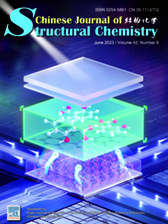
Cover Picture
UV-resistant salicylic acid as interface modifier for efficient and stable perovskite solar cells
Guo-Bin Xiao, Zihan Fang, Shengrong Yang*, Jing Cao*, Yu Tang* Submit a Manuscript
UV-resistant salicylic acid as interface modifier for efficient and stable perovskite solar cells
Guo-Bin Xiao, Zihan Fang, Shengrong Yang*, Jing Cao*, Yu Tang* Submit a Manuscript
UV-resistant salicylic acid as interface modifier for efficient and stable perovskite solar cells
Guo-Bin Xiao, Zihan Fang, Shengrong Yang*, Jing Cao*, Yu Tang*
Chin. J. Struct. Chem., 2023, 42: 100087. DOI: 10.1016/j.cjsc.2023.100087
June 15, 2023
Salicylic acid; Interface modification; UV absorption; Perovskite solar cells
ABSTRACT
Interfacial defect is one of the main hurdles to impede the improvement of efficiency and stability of perovskite solar cells (PSCs). Additionally, the ultraviolet (UV) irradiate induces the generation of deep defects, and further accelerate the decomposition of perovskite films. Thus, the interfacial modification is crucial to improve the efficiency and stability of PSCs. Here, the salicylic acid (SA) as a multifunctional interface material is employed to modify the interface of mesoporous cerium oxide (m-CeOx) and perovskite. The introduced SA molecules can interact with Ce in m-CeOx and Pb in perovskite through carboxylic acid functional groups to passivate interfacial defects and promote interfacial electron extraction and transport. The PSC with SA modification exhibits an improved power conversion efficiency (PCE) of 23.33%. More importantly, the SA can absorb UV light and reduce the damage of UV light to perovskite film, then improving the UV stability and overall stability of devices. This work provides a novel insight to design the interfacial modification materials for preparing efficient and stable PSCs.







